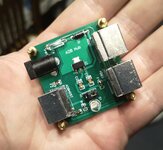thecroc15
Member
Been thinking a lot lately about what would max out an ADB port. Mostly for silly reasons as I collect random input devices, but also there seems to not be much out there to simplify the ADB equation for non-engineers like myself!
I guess my biggest question is: how easy is it to fry an ADB port by adding too many devices? And then what constitutes low power vs high power devices? My assumption always was that simple input devices like keyboards and mice were low power, and then dongle-vampires like modems/port jugglers/etc are all high power devices.
And to top it off, would a PowerBook supply less power to ADB than say a Quadra or Power Mac?
I promise I have searched, and even read some of the early 90s technical reference stuff (where IIRC three devices was the recommended, but not a technical max). Any thoughts or real world experience appreciated!
I guess my biggest question is: how easy is it to fry an ADB port by adding too many devices? And then what constitutes low power vs high power devices? My assumption always was that simple input devices like keyboards and mice were low power, and then dongle-vampires like modems/port jugglers/etc are all high power devices.
And to top it off, would a PowerBook supply less power to ADB than say a Quadra or Power Mac?
I promise I have searched, and even read some of the early 90s technical reference stuff (where IIRC three devices was the recommended, but not a technical max). Any thoughts or real world experience appreciated!

